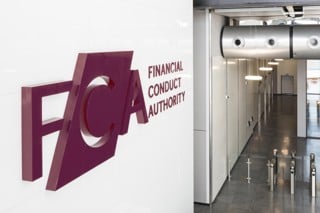In its report published in early March, the Financial Conduct Authority (FCA) found a lack of evidence linking a customer’s interest rate under the Difference in Charges (DiC) commission model and their credit score, because the rate was being determined by the broker or dealer’s ability to earn commission.
It added that it was not clear why brokers should have such wide discretion when setting the interest rate under DiC.
In total, the FCA estimated that these commission models could be costing customers £300 million more per year than if they had used a flat fee model. For example, on a motor finance agreement of £10,000, higher broker commission under the Reducing DiC model can add about £1,100 more in interest charges for the customer over a four-year term.
The FCA said the onus was on the lender to prove that any differences in commission rates were justified, based on the work done by the broker or dealer. The review also warned that pricing and affordability for customers could be adversely affected if such commission arrangements break the link between credit risk and the customer’s interest rate.
It also raised concerns about commission disclosure, particularly with DiC and similar models, adding that lenders are not doing enough to monitor commissions and protect the customer.
“DiC is a difficult issue to deal with because, in the main, dealers that use it do so appropriately and only a minority don’t,” said Louise Wallis, head of business development at the National Franchised Dealers Association (NFDA).
“My concern though, is that if dealer discretion is limited too much, you run the risk of reducing competition, so any changes need to be carefully thought through.”
The DiC debate
Martin Hill, the managing director of DealTrak, said that when DiC was introduced, it was seen as a way of dealers providing flexibility in their commissions without being detrimental to the consumer. But he said the FCA now clearly views that model as problematic and open to abuse.
“DiC can encourage some dealers or brokers to maximise finance commissions in a way that is detrimental to the consumer in areas such as affordability and sustainability,” he said. “Also, there have been many historical examples of dealers requesting very short or no debit-back terms from their lenders.
“Whereas this can be legitimately requested as part of a balanced rates and terms package for several reasons, it has previously led to accusations that the dealer can hold on to larger levels of commission – even if the customer cancels their agreement early due to the perceived high interest rate they have been paying. This, in turn, may lead lenders to focus on ways in which this risk can be mitigated in
their dealings with dealers and brokers.”
David Bilsborough, the owner of Cheshire Cars and a founder member of the IMDA, said the dealers who have likely been abusing DiC are those with a large stock that they sell off cheaply in the hope of making up their margin on commission from the finance deal. However, he said most dealers he knew offered fair and affordable interest rates and commissions.
Andrew Smith, FCA subject matter expert for consumer credit and motor finance at Paxen Consulting, said he didn’t have a problem with DiC if the broker or dealer could justify their commission. One example of this, he said, was if they had to arrange finance for someone who is self-employed or has just changed jobs or address and further work is required to verify their identity or income.
“If a dealership or broker genuinely has to undertake a greater level of work to secure a particular finance deal for a customer in difficult or exceptional circumstances, then they should be remunerated accordingly,” he said.
“The issue, however, is with brokers whose income relies solely on finance who load the interest rate purely so they can earn a higher commission.”
Smith said banning DiC, which the FCA is reportedly considering, would be the wrong move: “In the right circumstances, it genuinely rewards the broker or dealer for their work. Unfortunately, there’s not one silver bullet, because motor finance is such a diverse industry with so many different models.”
Mel White, business development director at Jigsaw Finance, said: “The market has operated with these models for a number of years and our experience has found that competition within the market has also had a policing effect on the rates offered to customers. In addition, lenders have capped both rates and commissions in recent years, so it is not an open cheque book.”
Potential fixes
The FCA said it’s still assessing what action to take, possibly consulting on changes to its consumer credit rules, banning DiC and similar models, or limiting broker discretion.
Adrian Dally, head of motor finance at the Finance and Leasing Association, believes the FCA will ban DiC and require full commission disclosure in the same way as with mortgages, insurance and investments. In turn, this will help improve consumer confidence, he said.
“The FCA has found clear quantifiable evidence to indicate that if the rules of the market are changed to prohibit the use of DiC type models the consumer stands to benefit,” he said. “Now they are looking at all of the options available and doing a cost-benefit analysis of each, which they will consult on before implementing the necessary changes.”
One alternative already being used by dealers is a single interest rate, and, in some cases, the same commission rate, regardless of the balance to be paid or the vehicle’s age, said James Tew, chief executive of iVendi.
“Many dealerships I have spoken to over the last 12 to 24 months told me that since they introduced a fixed APR model they have actually done a lot better in terms of finance deals,” he said. “The problem is that the dealer may still struggle to justify its commission if, for example, the consumer does the whole process online without its help.”
Another solution is to have a flat fee for every finance deal written with a lender, but that may reduce the revenue dealers make on their car finance. The unintended consequence of all this may be an increase in car prices.
“The elephant in the room, in respect of changes to DiC, is the impact on income,” said Shaun Harris, sales director at Codeweavers. “It seems inevitable that there will be some knock-on impact on the price of cars, notably in the used market.
“For this reason, and to ensure an orderly change, I expect that a rapid domino effect will take place as lenders follow one another to reflect the regulator’s desired position well ahead of any cut-off date.”
The risk to revenues
In some cases, dealers who previously relied on DiC will suffer a steep decline in profit. And the small margins made on the vehicle’s sale, particularly in used cars, mean ancillary products are often the only area where they can make up the shortfall.
Hill said dealers needed to focus on ensuring any commission they earn from finance and insurance (F&I) sales is derived from a wider selection of products such as GAP insurance, service plans and warranties. This also benefits customers because they have a greater choice of products relevant to their needs, he said.
“Also, selling ancillary products such as insurance can drive more loyalty to other parts of the business, such as aftersales,” he said. “This approach demands a wider vision in terms of F&I thinking, and of course can come with additional regulatory responsibilities, especially if the dealer is going to be undertaking general insurance activity.” ALEX WRIGHT


















Login to comment
Comments
No comments have been made yet.